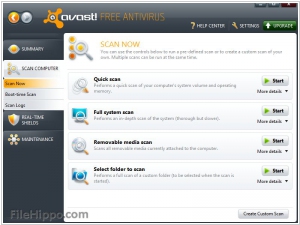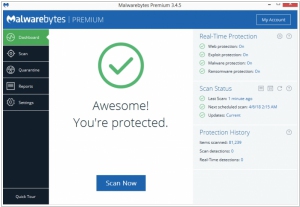Avast vs Malwarebytes
March 12, 2025 | Author: Michael Stromann
23★
Be prepared for whatever comes your way with the most trusted security in the world. Available for everyone, for free. Protect your devices with the best free antivirus on the market. Download Avast antivirus and anti-spyware protection for your PC, Mac and Android.
20★
Traditional antivirus fails because it’s slow to react to new threats. Malwarebytes uses layers of technology like anomaly detection (a cool sort of artificial intelligence), behavior matching, and application hardening to crush malware that hasn’t even been seen before.
Avast and Malwarebytes, despite their different approaches, have a lot in common—like two rival spacefaring civilizations that both independently invented the teapot. They offer free and paid versions, promise to guard your digital existence and run on all the usual gadgets. They also both claim to protect you from phishing, malware and those deeply suspicious emails promising an inheritance from a distant relative you never had. In essence, they are the digital equivalent of a very stern, slightly overzealous but well-meaning bouncer at the entrance of your internet nightclub.
Avast, the older and possibly more paranoid of the two, hails from the Czech Republic and has been in the business of squashing digital nasties since 1988—roughly the same time people thought fax machines were the pinnacle of technological achievement. It comes with an arsenal of extras like a VPN, firewall and password manager, because why stop at just fighting malware when you can also play secret agent? Its approach is rather traditional, relying on enormous databases of known threats and cloud-powered AI, ensuring that it knows everything about malware—probably more than malware knows about itself.
Malwarebytes, the younger, brasher American contender, popped up in 2008, around the time social media became self-aware and started controlling human behavior. Unlike Avast, it doesn’t worry too much about long lists of known threats; instead, it takes a more improvisational jazz approach to cybersecurity—spotting suspicious behavior and shutting it down with ruthless efficiency. It’s particularly good at showing up after an infection and kicking the intruders out, like a no-nonsense exterminator who doesn’t ask how the rats got in, just starts swinging. It skips traditional antivirus bells and whistles but excels at scrubbing systems clean when things go horribly wrong.
See also: Top 10 Antivirus Software
Avast, the older and possibly more paranoid of the two, hails from the Czech Republic and has been in the business of squashing digital nasties since 1988—roughly the same time people thought fax machines were the pinnacle of technological achievement. It comes with an arsenal of extras like a VPN, firewall and password manager, because why stop at just fighting malware when you can also play secret agent? Its approach is rather traditional, relying on enormous databases of known threats and cloud-powered AI, ensuring that it knows everything about malware—probably more than malware knows about itself.
Malwarebytes, the younger, brasher American contender, popped up in 2008, around the time social media became self-aware and started controlling human behavior. Unlike Avast, it doesn’t worry too much about long lists of known threats; instead, it takes a more improvisational jazz approach to cybersecurity—spotting suspicious behavior and shutting it down with ruthless efficiency. It’s particularly good at showing up after an infection and kicking the intruders out, like a no-nonsense exterminator who doesn’t ask how the rats got in, just starts swinging. It skips traditional antivirus bells and whistles but excels at scrubbing systems clean when things go horribly wrong.
See also: Top 10 Antivirus Software





